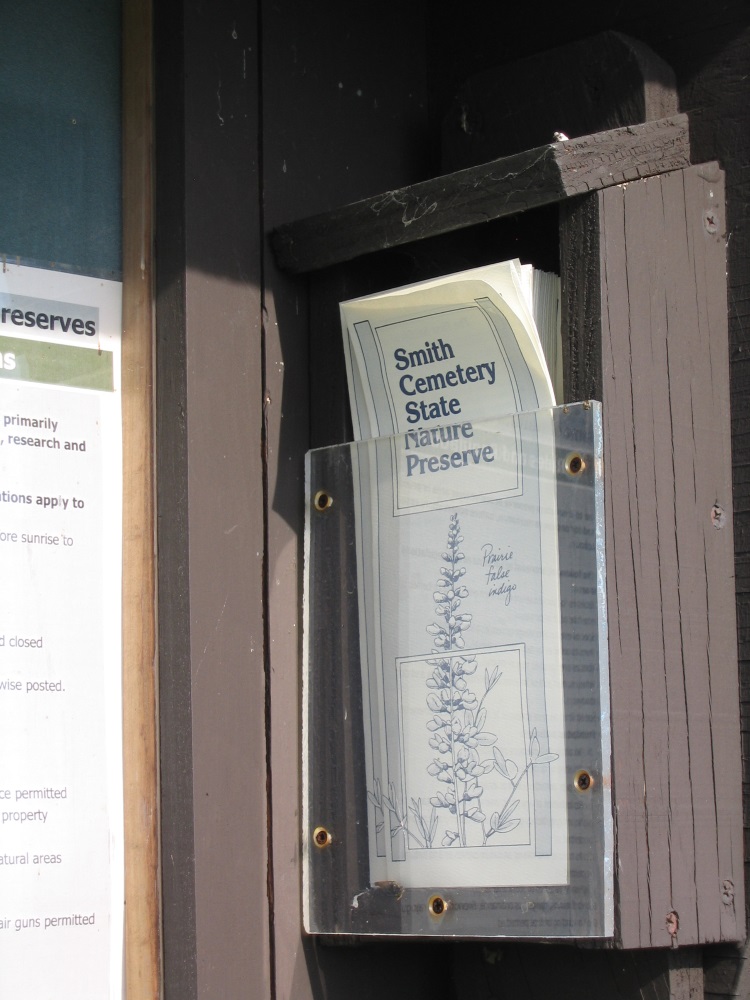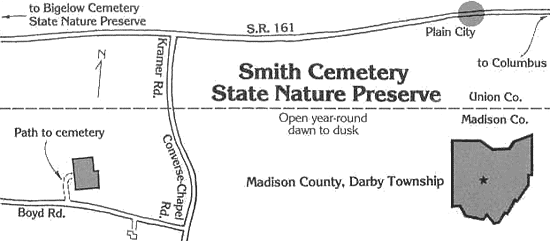Smith Cemetery State Nature Preserve

Smith Cemetery State Nature Preserve
4648 County Highway 42 Plain City, OH 43064
Official WebsiteAlso, see all the hotspots at:
Madison County Birding Drive
About this Location
The Darby Plains were considered worthless by the early settlers. The plains consisted of extensive wet prairie, especially the land lying between Big and Little Darby Creeks. Although these poorly drained lands were covered with water several months each year, by late fall they would become powder dry and subject to raging prairie fires.
- Remnant tallgrass prairie
- Spectacular prairie wildflowers
- Purple coneflower
- Trail system
The Darby Plains supported a vast tallgrass prairie interrupted only by numerous scattered groves of oaks and hickories, especially groves of bur oaks. The dense prairie grass often grew to heights of 6-8 feet. The whole area was described as a sea of prairie grasses and colorful prairie wildflowers. Ohio’s native prairies are an outlier of the extensive tallgrass prairies of the west.
The pioneers called these grasslands the “barrens.” For much of the year they were too wet to plow. Mosquitoes thrived within the dense, wet prairie grasses and were often intolerable. Yet, by late summer the soil would bake dry and crack.
Consequently, these were among the last lands in this part of Ohio to be settled. However, between 1810 and 1820 the barrens were finally settled, mostly by families from New England. They paid from 40 cents to $2 an acre for the land. From Worthington, Ohio, these families followed the Post Road westward into the Darby Plains where they staked out their land, built their cabins, and endured the hardships of this prairie wilderness.
Eventually, through ditching and tiling, the Darby Plains were converted from inhospitable, wet prairie to some of the most valuable agricultural lands in the state.
In less than 150 years, the tallgrass prairie was almost obliterated. Today, only scattered bur oak trees and groves and infrequent patches of prairie plants are all that remain of the original vast prairie. Still, as if by design, the best remnants of the Darby Plains survive here at Smith and in nearby Bigelow Cemetery.
In pioneer cemeteries, the original prairie sod supports relics of original prairie flora and serves as the final resting place for many of the first settlers whose lives were so interwoven with the prairie wilderness of the Darby Plains.
December 17, 1982, 148 years after Samuel Smith Jr. transferred ownership of this cemetery to the Darby Township Trustees, the trustees dedicated Smith Cemetery as a state nature preserve to be managed by the Division of Natural Areas and Preserves. It is managed to preserve the historic tombstones, perpetuate the prairie plants, and eliminate invading non-native plant species.
Smith Cemetery is located in Madison County, 2 miles west of Plain City on OH-161; proceed 1 mile south on Kramer Road (Union County Road 42); this road becomes Converse Chapel Road (Madison County Road 41); then 0.25 mile west on Boyd Road to the prairie cemetery located on the north side.
No restroom facilities.
Features
Restrooms on site
Content from Official Website
